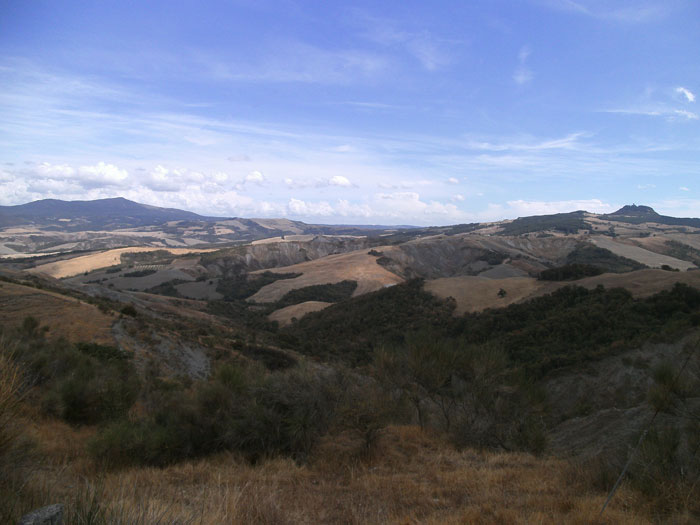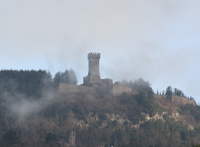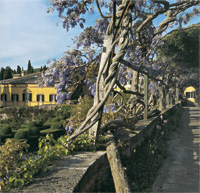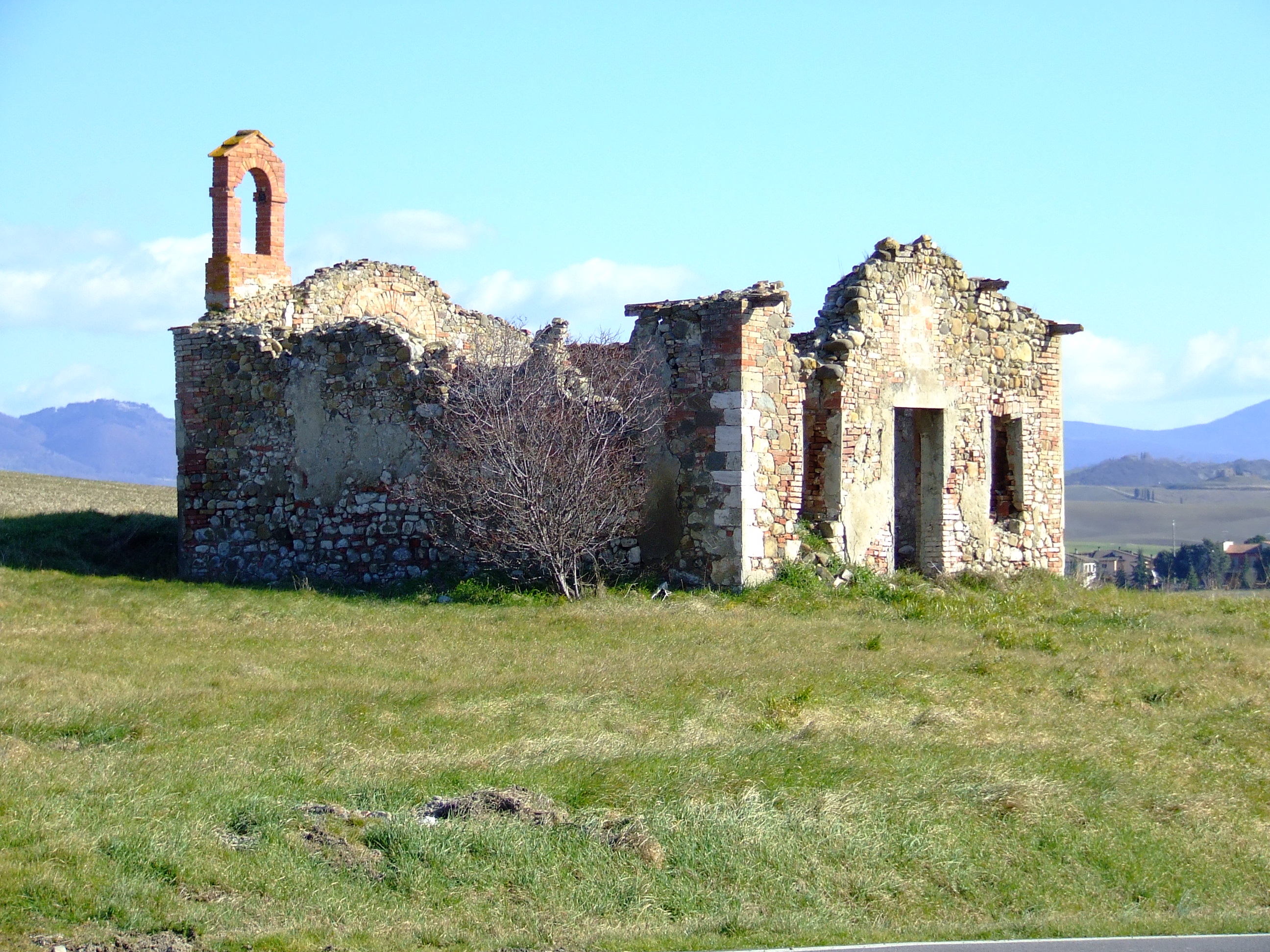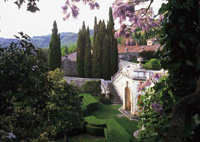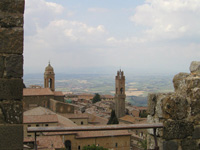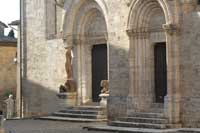|
| Postioned at the southern edge of the province of Siena, bordering with Lazio and Umbria, Radicofani sits on top of the mountain of Radicofani. Already known during the Roman empire, along the Cassia Road, half way between Roma and Florence. Renown for its pastures and meadows, Radicofani gives the best sheep milk to produce the “Pecorino” cheese, famous the world over. Together with Castiglione d'Orcia, Montalcino, Pienza and San Quirico d'Orcia Radicofani forms the renown “VAL D’ORCIA” that from the year 2004 is part of “UNESCO WORLD HERITAGE”. The "Rocca" of Radicofani Radicofani castle is perched on a natural promontory (over 800m high), overlooking the surrounding countryside of the Val d'Orcia, its easily recognisable tower standing out proudly against the skyline. The medieval town's brown stone houses and steep narrow streets are nestled against the fortress walls. Two fine churches, the Palazzo Pretorio with its coats of arms, and a fine view of Monte Amiata and the peaks of the Orcia hills from the public gardens all add to the charm of the village. The main landmark of Radicofani is its Rocca (Castle), of Carolingian origin and documented from 978. It was the castle of Ghino di Tacco. Occupying the highest point of a hill, at 896 m, it was restored after the conquest from the Grand Duchy of Tuscany (1560-1567). It has two line of walls: the external one has pentagonal shape, while the inner one is triangular, with three ruined towers at each corner and a cassero (donjon) which can be visited.Also notable is the Romanesque church of San Pietro, with a nave, housing some works by Andrea della Robbia, Benedetto Buglioni and Santi Buglioni. Also by della Robbia is the precious Madonna with Saints at the high altar of the church of Sant'Agata. |
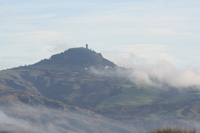 Radicofani Radicofani
|
|
|
The town’s buildings are gathered at the base of the volcanic rock with La Rocca (Fortress) at the peak, visable from many kilometers away. |
Villa La Foce |
||
| The property of La Foce extends over the hills overlooking the Val d'Orcia In 1924 the Irish-American Iris Origo - the famous author - and her Italian husband, Marchese Antonio Origo, acquired the La Foce estate- a combination of olive groves, widespread cultivated fields and woodland. In those days, their management of La Foce brought prosperity and cultural and social changes to the poverty-ridden land it was then. Today their daughters, Benedetta and Donata, run the La Foce estate and their personality pervades in the hospitable atmosphere. The garden at La Foce was designed by Iris Origo and the famous English landscape gardener Cecil Pinsent between 1925 and 1939. La Foce means 'the meeting point' as the fifteenth-century hostel was built at the intersection of the valley's two main roads. The Val d'Orcia had been much neglected over the centuries, laid bare by soil erosion and desolated by wars between rival city-states. The new owners set about restoring it to life. Fifteen years of hard work resulted in the establishment of fifty farms, each of about a hundred acres, all grouped round one central fattoria where the Origo family lived and where all the general decisions were made about what crops to grow and what agricultural methods to adopt. Each tenant farmer held his individual farm by the usual Tuscan system of mezzadria, sharing all produce with the proprietor but depending on him for equipment and capital.[1] There was no garden at La Foce when the Origos arrived, just the remains of a giardino Inglese which had probably been planted in the nineteenth century for ease of maintenance. In the early days water was scarce; the well barely provided enough drinking water and any excess went immediately to the farm. Soon after moving in, however, Origo began creating a small garden at the back of the villa, the furthest point from the busy fattoria courtyard. This was her private space, her bulwark against the vast, inhuman landscape. She later recalled how, on first vie\ving the property, she was overcome by a longing for gentle Florentine hills or green English fields - and most of all for a pretty house and garden to come home to. It was this that Pinsent helped her create.[1] Through the wood, a path joins the garden and the family cemetery.
|
||
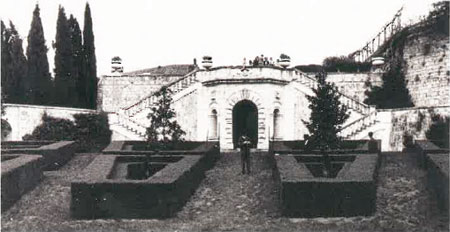 |
Villa La Foce, garden and belvedere | |
|
||
| When Antonio and Iris Origo bought the estate of La Foce, they engaged the English architect Cecil Pinsent, who had previously done extensive work on Bernard Berenson's Villa I Tatti in Florence, to restructure the main buildings and create a large garden. The latter was conceived to enhance the Renaissance house and expand the spectacular view over the valley of the Orcia and the Amiata mountain. The harmony between buildings, garden and nature makes La Foce an ideal example of Tuscany's architectural and cultural evolution in the XXth century. The cypresses that twine up a hill side near Chianciano Terme have become an emblem of Tuscany. But they also have a story, for they were planted by Marchese and Marchesa Origo as part of a scheme to improve the landscape of what was then among Italy's most desolate regions. They also, no doubt, softened the view from the masterpiece the idealistic young couple created nearby, at what had been until their arrival a wayside inn: one of the most dramatic twentieth-century gardens. |
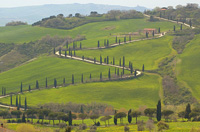 Winding road with cypresses between La Foce and Monticchiello |
|
Radicofani borders the following municipalities: Abbadia San Salvatore, Castiglione d'Orcia, Pienza, San Casciano dei Bagni, Sarteano. |
||
|
|
||||
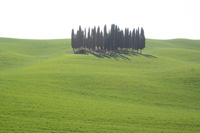 |
 |
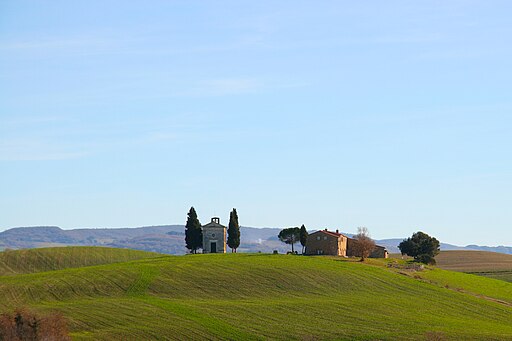 |
||
| Cipressi tra San Quirico d'Orcia e Montalcino | Pienza | San Quirico d'Orcia, Cappella della Madonna di Vitaleta
|
||
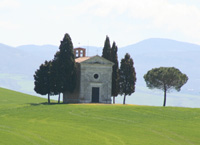 |
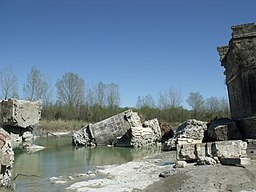 |
|||
Cappella della Madonna di Vitaleta, nei pressi di San Quirico d'Orcia
|
Ruin Ponte di Pian di Maggio | Gallina, chiesa di La Scala
|
||
[1] Katie Campbell , A modern pastoral in an ancient landscape - Iris Origo's La Foce, in Paradise of Exiles: The Anglo-American Gardens of Florence, p. 159-161
|
||||
Podere Santa Pia |
Podere Santa Pia |
The gardens of La Foce |
||
Pienza |
Montalcino |
San Quirico d'Orcia |
||
The landscape ot the Val d'Orcia as it unfolds nowadays was created by wealthy Siennese merchants in the 14th and 15th centuries. The farms cultivate mainly grains, vines and olives. Rows of cypresses are also a distinctive sight. The beauty of the area inspired Renaissance painters and early travellers on Via Francigena. |
||||
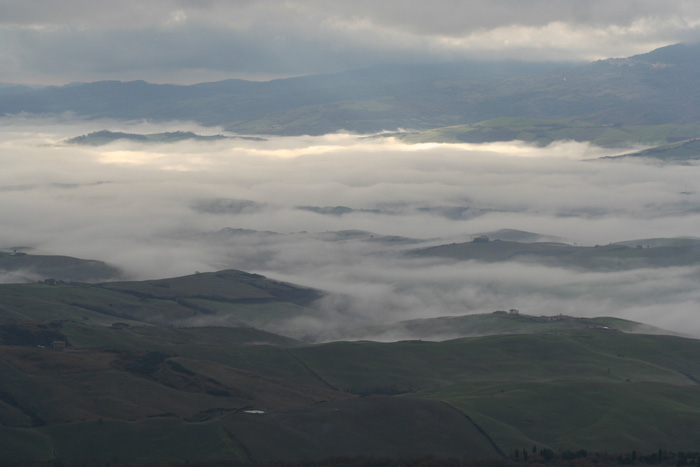 |
||||
The Val di Chiana between Radicofani and Chiusi |
||||
